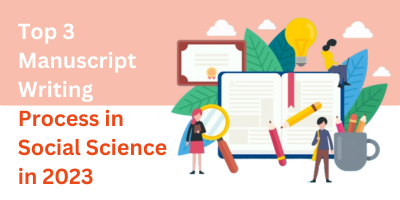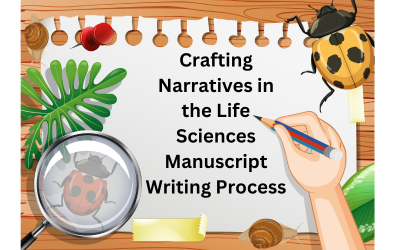Welcome to our blog where we break down the Top 10 Causes of Manuscript Rejection for the year 2024-25. If you’re a writer aiming to get your work out there, understanding why manuscripts get rejected is crucial.
We’ll be diving into the nitty-gritty details that editors and publishers pay attention to when reviewing submissions. From little things like formatting and grammar slip-ups to bigger concerns like originality and relevance, we’ve got it covered.
A manuscript is the written draft of a book or document before it’s published. It represents an author’s creative work, often undergoing revisions before reaching its final form. Knowing how to handle a manuscript rejection is essential for authors, involving resilience, learning, and refining the writing for future submissions.
Knowing these common stumbling blocks is the first step toward success in the writing game. But that’s not all – we’ll also share practical tips and tricks on Ways to Deal with Manuscript Rejection. So, let’s explore the reasons behind manuscript rejection and arm ourselves with strategies to bounce back stronger than ever in the ever-changing world of publishing.
How to Handle a Manuscript Rejection
Receiving a manuscript rejection can be disheartening, but it’s crucial to view it as an opportunity for growth and refinement. Here are effective ways to handle a manuscript rejection:
Initial Reaction:
Allow yourself to feel disappointed, but don’t let it discourage you from pursuing your passion.
Take a step back before responding emotionally. Allow yourself time to consider the criticism.
Request Feedback:
For detailed comments, get in touch with the editor or agent. Gaining insight from knowing the causes of the rejection can be quite beneficial.
Learn and Adapt:
Embrace the rejection as a learning experience. Identify patterns in feedback and use them to enhance your writing skills.
Consider joining writing groups or seeking mentorship to gain additional perspectives on your work.
Revise and Polish:
Use the feedback received to revise and polish your manuscript. A rejection doesn’t mean the end; it’s an opportunity to make your work stronger.
Diversify Submissions:
Submit your manuscript to a variety of publishers or agents. Casting a wider net increases your chances of finding the right fit.
Stay Resilient:
Cultivate resilience in the face of rejection. Understand that even successful authors faced numerous rejections before finding success.
Celebrate Progress:
Celebrate small victories along the way. Recognize improvements in your writing and the resilience you’ve developed.
Now, let us know 10 Causes of Manuscript Rejection for 2024 and beyond about which you may not even know about.
Poor Editing and Proofreading:
Causes:
- First Impressions Matter: Manuscripts laden with grammatical errors and spelling mistakes create a negative first impression on editors.
- Readability Issues: Poor sentence structure and awkward phrasing can hinder the flow of the narrative, making it less enjoyable for readers.
Solutions:
- Professional Editing Services: Enlist the help of professional editors to thoroughly review and polish your manuscript.
- Self-Editing Techniques: Develop self-editing skills by taking breaks between writing and revising. A fresh perspective can reveal overlooked errors.
- Beta Readers: Engage beta readers to provide valuable feedback on the overall readability and clarity of your manuscript.
- Proofreading Checklist: Create a checklist to systematically identify and rectify common errors during the proofreading process.
How to Deal with the Manuscript Rejection:
- Learn from Feedback: If rejection occurs, seek feedback on editing issues. Use it as a guide for improvement.
- Continuous Improvement: Embrace rejection as an opportunity to enhance your editing skills. Continuously refine your work for future submissions.
Lack of Originality:
Causes:
- Manuscripts that fail to offer a unique perspective may struggle in an oversaturated market.
- Editors seek fresh narratives; manuscripts with predictable plotlines or clichéd themes may face rejection.
Solutions:
- Infuse your manuscript with fresh and innovative ideas. Explore unique angles or perspectives to set your work apart.
- Stay informed about current literary trends and reader preferences to ensure your work aligns with market demands.
- Develop distinct and memorable characters to breathe life into your narrative.
- Seek input from writing groups or beta readers to identify areas where your manuscript can be more original.
- If rejection occurs, reevaluate the originality of your work. Consider incorporating feedback to enhance the uniqueness of your manuscript.
- Continuously seek inspiration from various sources to keep your writing fresh and innovative.
Inadequate Formatting:
Causes:
- Unprofessional Presentation:
- Manuscripts with improper formatting may appear unprofessional, creating a negative impression on editors.
- Difficulty in Review:
- Editors often have specific formatting preferences. Manuscripts that deviate from these guidelines can be challenging to review.
Solutions:
- Follow Submission Guidelines:
- Adhere to the specific formatting guidelines provided by publishers or agents to ensure your manuscript meets industry standards.
- Use Formatting Tools:
- Utilize writing and formatting tools to maintain consistency in font, spacing, and margins throughout your manuscript.
- Seek Professional Assistance:
- If uncertain, consider seeking assistance from professionals or editors who specialize in manuscript formatting.
- Review Guidelines Thoroughly:
- In case of rejection, review submission guidelines to identify any formatting issues that may have led to rejection.
- Learn from Mistakes:
- Use rejection as a learning opportunity to refine your formatting skills for future submissions.
Irrelevant Content:
Causes:
- Manuscripts that do not align with the publisher’s guidelines or genre specifications may face rejection. Failure to address current market trends and reader interests can render a manuscript irrelevant in the eyes of editors.
Solutions:
- Investigate and understand the specific guidelines and preferences of the target publisher or agent before submitting your manuscript. Stay informed about evolving literary trends and reader preferences to ensure your content remains relevant and marketable. Ensure that your manuscript fits within the designated genre, providing a clear and appealing narrative for the intended audience.
Handling Manuscript Rejection:
Upon rejection, assess whether your manuscript adheres to guidelines and remains relevant. Adjust your approach for subsequent submissions. Use rejection as a motivator to adapt your writing to the ever-changing literary landscape. Continuous improvement increases the chances of acceptance.
Inadequate Literature Review
Reasons for Manuscript Rejection: Inadequate Literature Review
- Lack of Contextual Background:
- Manuscripts often face rejection when they fail to provide a comprehensive literature review, leaving readers without sufficient context for the research.
- Limited Understanding of Previous Work:
- Inadequate literature reviews may indicate a lack of understanding of existing research, diminishing the manuscript’s credibility and relevance.
- Failure to Identify Gaps:
- Manuscripts should highlight gaps in current knowledge. Failure to identify these gaps leaves reviewers questioning the originality and significance of the research.
Handling Manuscript Rejection: Solutions for Literature Review Improvement
- Thorough Review and Inclusion:
- Conduct an exhaustive review of relevant literature to provide a strong foundation for your research. Include recent studies and key findings in the field.
- Clear Articulation of Gaps:
- Clearly articulate the gaps in existing literature that your research aims to address. This demonstrates a thoughtful approach and justifies the significance of your work.
- Address Reviewer Feedback:
- If a manuscript is rejected due to literature review concerns, carefully address reviewer comments in the resubmission. Show a willingness to enhance the review section.
Methodological flaws
Manuscript Rejection Reasons: Methodological Flaws
- Underdeveloped Research Design: Manuscripts with inadequately designed experiments or research methodologies risk rejection, as they may lack the robustness required for credible scientific contributions.
- Incomplete or Unreliable Data Collection: Flawed data collection processes, including insufficient sample sizes or unreliable instruments, can undermine the manuscript’s reliability and validity.
- Failure to Address Confounding Variables: Overlooking confounding variables or failing to control for them in the research design raises concerns about the accuracy and interpretation of results.
Rejection Handling: Solutions for Methodological Improvement
- Thorough Pilot Testing: Conduct thorough pilot testing to identify and address potential issues in the research design, ensuring a well-executed and reliable study.
- Transparent Method Descriptions: Clearly articulate the research methodology, providing detailed descriptions of the procedures employed. Transparency enhances the manuscript’s credibility.
- Peer Review Consultation: Seek input from peers or subject matter experts during the research design phase to identify and rectify potential methodological flaws before submission.
Mismatch with Journal Scope
Manuscript Rejection Reasons: Mismatch with Journal Scope
- Manuscripts that deviate significantly from the scope and focus of the targeted journal may face rejection, as they do not align with the publication’s objectives.
- Neglecting to adhere to specific guidelines outlined by the journal regarding content and scope may lead to rejection due to a mismatch in expectations.
- Journals cater to specific audiences. Manuscripts that are not tailored to the expected readership may be rejected for lacking relevance or interest.
Reasons for Manuscript Rejection: Handling Mismatch with Journal Scope
- Familiarize yourself with the journal’s mission, aims, and scope before submission to ensure your manuscript aligns with its intended focus.
- Customize your manuscript to adhere to the specific guidelines provided by the journal, optimizing its compatibility with the editorial requirements.
- Select journals that closely match the subject matter and methodology of your research to enhance the manuscript’s alignment with the intended audience.
Final Thoughts
In sum, knowing the Causes of Manuscript Rejection is really important for writers in 2024-25. It’s like a map to avoid common problems that might lead to rejection. Rejections can be tough, but there are simple ways to handle them. Take rejection as a chance to learn and make your writing better. Ask for feedback, join workshops, and keep improving.
Remember, rejection is not the end—it’s a step toward success. Ways to deal with manuscript rejection include staying positive, learning from the feedback, and working on the weak points. It’s similar to making a comeback out of a setback! So, keep going, keep learning, and let each rejection be a part of your journey toward becoming a better writer.
Authenu is a research consulting organization that provides comprehensive support services for doctoral candidates and master’s students who wants to know How to Handle a Manuscript Rejection. The company specializes in customized consultation and guidance.
They offer manuscript rejection handling services for researchers who have faced rejection of their manuscripts at some point in their career. Their expert consultants understand the significance of a well-designed manuscript in ensuring the reliability and validity of research. With a deep understanding of various manuscript structuring techniques, their consultants will guide researchers through the process of revising their manuscript to resubmit it.
Authenu has been providing research support services since 2015 and has helped over 500+ consultants. They provide economical services without sacrificing quality, ethical procedures guaranteeing academic integrity, and tailored advice for individual research assistance. Their process of handling of rejection involves going through every single reviewer comment that is received in the rejection letter, taking an in-depth look at the study, discussing it in detail with the researcher, and making the necessary changes in the manuscript content and reorganizing it.
Frequently Asked Questions
How to avoid rejection when submitting manuscripts?
Submit polished manuscripts with attention to formatting, grammar, and originality to avoid rejection.
What should I do if my paper is rejected from a journal?
If your paper is rejected from a journal, consider revising it based on feedback and submitting to another journal.
Why does a journal reject manuscripts?
Journals reject manuscripts for various reasons, including poor quality, lack of relevance, or failure to meet submission guidelines.


